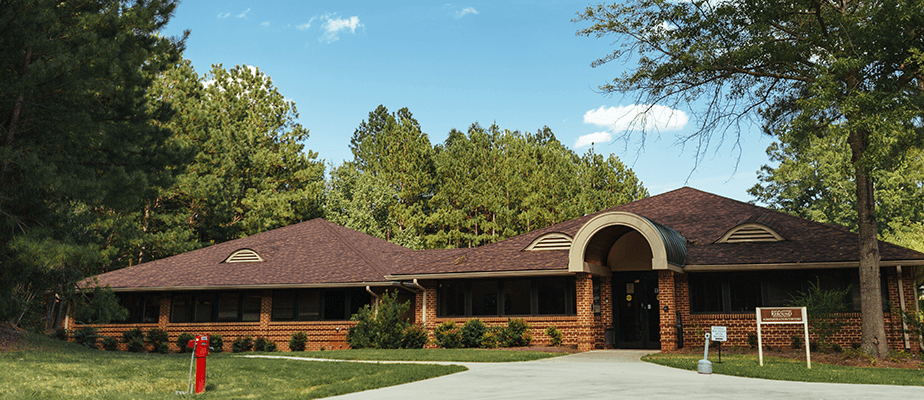Bipolar disorder can be a devastating illness. Those struggling with bipolar disorder often need long-term care to help them manage their symptoms.
More About Bipolar Disorder
Learn More About Bipolar Disorder
Bipolar disorder, also called “manic depression,” is a serious, chronic, life-long mental health disorder that is associated with wild fluctuations in mood. From the high highs of mania to the dark, deep lows of depression, life with bipolar disorder can be a roller coaster. During depressive cycles, people with bipolar disorder may struggle with feelings of worthlessness, hopelessness, and sadness that interfere with their ability to function in daily life. During the manic (or hypomanic) cycles of this disorder, people feel exhilarated, on top of the world, and experience boundless energy that can severely impact daily living. The severity of bipolar disorder varies considerably among individuals. Some may shift from depression to mania only a couple times during their lifetime while others my cycle several times each day. Additionally, some people who have bipolar disorder may experience “mixed states,” a particularly dangerous combination of depressive and manic symptoms that can lead to risky, suicidal behaviors. There are several types of bipolar disorder that can indicate the severity of symptoms. These include:
Bipolar I disorder, often called “classic bipolar disorder,” is characterized by mood swings so severe that it can lead to significant impairment in social, interpersonal, personal, occupational, and scholastic functioning. While treatable with the right combination of therapies and medication, the high highs and low lows of bipolar I can lead to very dangerous, risky behaviors.
Bipolar II disorder is considered to be less severe than the symptoms of bipolar I disorder. People who have bipolar II experience hypomania, a less severe form of mania, and often experience longer depressive episodes than those with bipolar I disorder.
Cyclothymic disorder or cyclothymia is an even milder form of bipolar disorder. The depressive and hypomanic episodes of cyclothymia can lead to challenges in daily life, but the symptoms are not as severe as other forms of bipolar disorder.
Rapid-cycling bipolar disorder is a very severe form of bipolar disorder that is diagnosed when an individual experiences at least four episodes of depression, mania, hypomania, or mixed states in one year.
While bipolar disorder can cause tremendous chaos in a person’s life and devastating consequences, it can be managed. Bipolar disorder is a chronic condition that, like diabetes, requires daily maintenance to keep under control, which includes therapy, medications, and self-care.
Statistics
Statistics on Bipolar Disorder
Bipolar disorder is a relatively common mental illness in the United States that affects about 2.6% (or 5.7 million adults) of the population each year. Bipolar disorder affects men and women at equal rates; however more than three times as many women experience rapid cycling bipolar disorder. Most people have symptoms of bipolar disorder by age 25. Symptoms may appear during childhood or during the older adult years.
What Causes Bipolar Disorder?
Learn About the Causes and Risk Factors for Bipolar Disorder
Bipolar disorder is not thought to be the result of a single cause or risk factor, rather it is believed that a number of predispositions, environmental triggers, and risk factors work together to cause bipolar disorder. The most commonly cited risk factors and causes for bipolar disorder include:
Genetic: Similar to many mental illnesses, bipolar disorder often runs in families. People who have a first degree relative – such as a parent or sibling – who has bipolar disorder are at greater risk for developing the disorder than others without a similar history. It’s worth noting that not all people who develop bipolar disorder have a family history of the disorder.
Physical: Neuroimaging studies, such as MRIs and CT scans have discovered that the brains of people with bipolar disorder appear different in structure and function than those who do not. The area of the brain responsible for problem solving and making decisions, the prefrontal cortex, is smaller in people who have bipolar disorder. It’s also believed that an imbalance in certain hormones and neurotransmitters may put a person at risk for developing bipolar disorder.
Environmental: Environmental triggers, such as stress, traumatic experiences, abuse (as a child or an adult), and significant loss may play a role in triggering the development of bipolar disorder.
Risk Factors:
- Major life changes
- Being in your early 20s
- Substance abuse or alcoholism
Signs of Bipolar Disorder
Signs and Symptoms of Bipolar Disorder
The symptoms of bipolar disorder will vary immensely from person to person, based upon the type of bipolar disorder, co-occurring disorders, duration of illness, presence of substance abuse, and individual genetic makeup. Symptoms of bipolar disorder are generally grouped together by the type of mood cycle the symptoms are associated with. The most common symptoms of bipolar disorder include:
Depressive symptoms:
- Sadness
- Hopelessness
- Suicidal thoughts and behaviors
- Anxiety
- Guilt
- Sleep problems
- Low appetite or increased appetite
- Increased or decreased need for sleep
- Fatigue
- Feeling “slowed down”
- Loss of interest in once-pleasurable activities
- Problems concentrating
- Irritability
- Chronic pain without a known cause
- Frequent absences from work or school
- Poor job or scholastic performances
- Self-harm
- Suicidal thoughts
Manic (or hypomanic) symptoms:
- Euphoria
- Inflated sense of self-worth
- Increased self-esteem
- Poor judgment
- Rapid speech
- Racing thoughts
- Aggressive behaviors
- Agitation and irritation
- Increased physical activities
- Risky behaviors
- Spending sprees and other unwise financial choices
- Increased sex drive
- Easily distracted
- Careless usage of drugs and alcohol
- Psychosis – break from reality
- Delusions
- Poor performance at work or school
- Self-harm
- Suicidal thoughts
Effects of Bipolar Disorder
The Effects of Bipolar Disorder
Bipolar disorder is a very treatable and manageable illness, however, many people do not seek immediate treatment for their bipolar disorder. The long-term complications of untreated bipolar disorder can cause devastation to virtually every aspect of an affected individual’s life. These include:
- Substance use and abuse
- Addiction
- Medication non-compliance
- Social isolation
- Legal problems
- Incarceration
- Interpersonal relationship challenges
- Poor work or school performance
- Loneliness
- Frequent absences from work or school
- Consequences of reckless behavior
- Financial problems
- Worsening emotional wellbeing
- Worsening physical wellbeing
- Self-harming behaviors
- Suicidal ideation
Co-Occurring Disorders
Bipolar Disorder and Co-Occurring Disorders
A great number of people who have bipolar disorder also struggle with a co-occurring mental health disorder. The most common co-occurring disorders include:
- Post-traumatic stress disorder
- Anxiety disorders
- ADHD
- Conduct disorder
- Substance abuse and addiction
- Disruptive behavior disorders


















